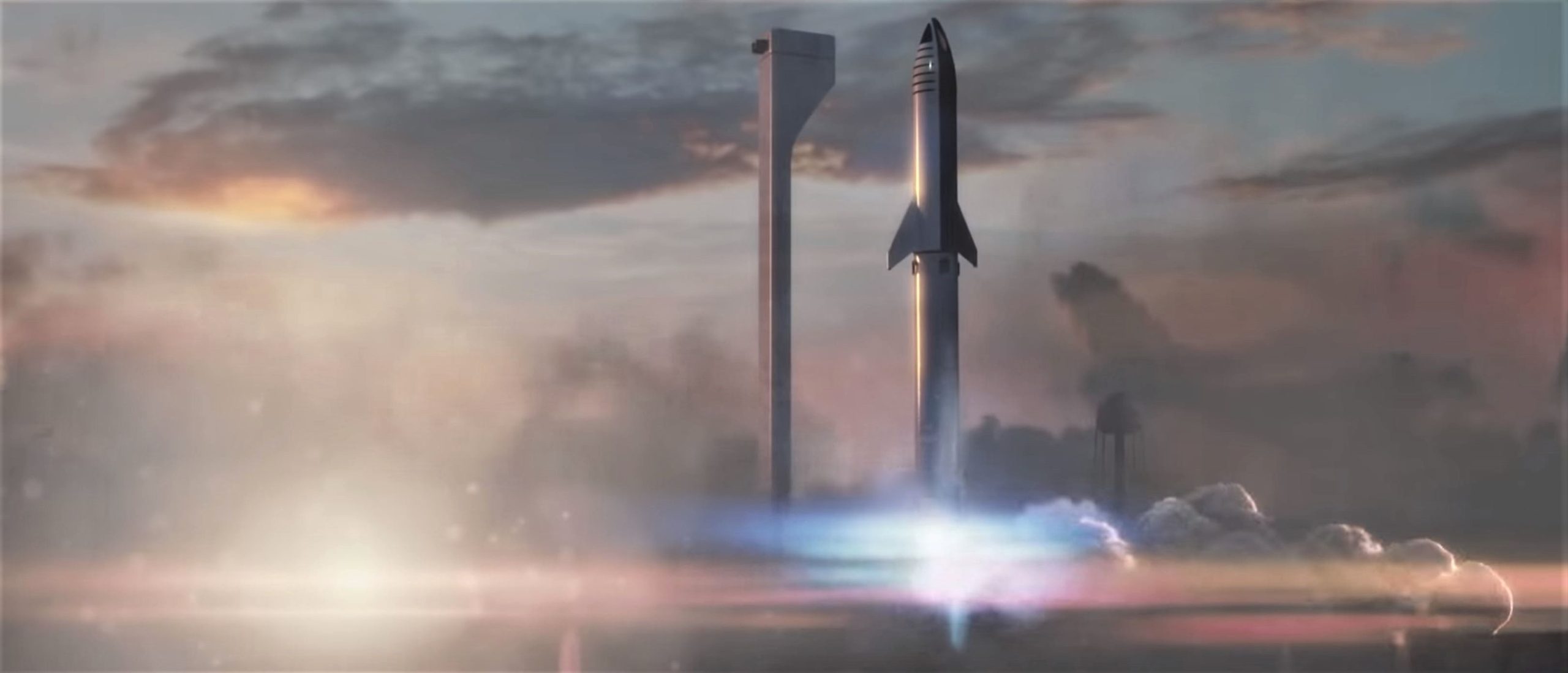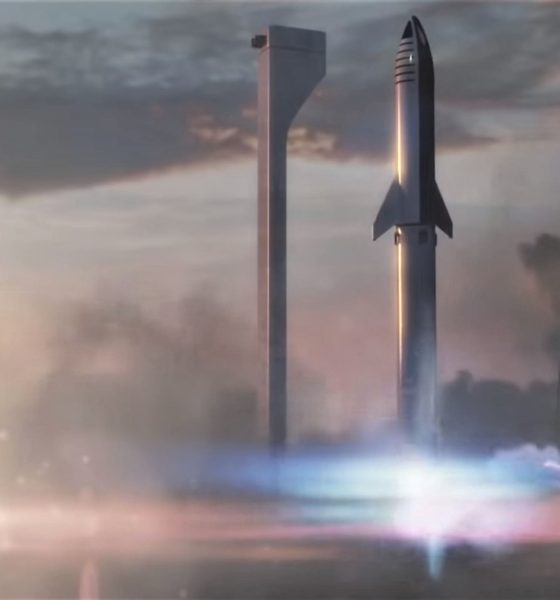

News
SpaceX’s Starship/Super Heavy rocket needs a launch pad and work is already starting
According to SpaceX job posts published early this month, the company has already begun the process of looking for the engineer or engineers that will be responsible for preparing both Starship/Super Heavy and its prospective pad facilities for the rocket’s inaugural launches.
Per one of those posts, Starship/Super Heavy’s “initial launch capability” will be achieved at Kennedy Space Center’s historic Launch Complex 39A (also known as Pad 39A), a facility SpaceX has leased since 2014 and launched from since 2017. Originally constructed in the 1960s to support Saturn V, the largest operational US rocket ever built, Pad 39A spent another three decades supporting dozens of Shuttle launches until the latter was also retired, after which SpaceX took over the historic facility. Although SpaceX has specifically discussed plans to ultimately turn its South Texas outpost into a full-fledged orbital launch site, that will be an extremely slow and expensive endeavor and Pad 39A makes sense for several reasons.
Building rocket launch facilities is hard
Even though SpaceX has still tended to aggressively outperform its competitors and peers, the process of building a new launch complex from scratch is extremely challenging. For example, after SpaceX suffered a catastrophic failure of Falcon 9 at Pad 40 (LC-40) in September 2016, the company had to conduct extensive refurbishment and even tacked on some pre-planned upgrades. Still, a large portion of the pad remained intact, including the flame trench (with minor damage), hangar facilities, and more.
Ultimately, it took SpaceX more than 10 months and $50M to repair, rebuild, and upgrade LC-40. The biggest single ticket item was likely the new transporter/erector and its associated launch mount and water deluge system, followed by new plumbing and communications infrastructure throughout the pad. By far the most time-consuming and expensive process, however, is laying a foundation for the launch pad itself, most of which SpaceX was able to skip at Pad 40 after some relatively minor repairs and modifications.

Although Blue Origin is as tightlipped as space startups come, owner Jeff Bezos has indicated that the companies large-scale LC-36 pad – built from a clean slate – was part of an overall investment of “more than $1 billion”. That is split between LC-36, a new factory, and a more general-use campus in and around Cape Canaveral, Florida. Building a factory is even more expensive than launch facilities, so the overall cost of building LC-36 from scratch is likely somewhere between $150M and $300M, although it could be even more expensive.
LC-36 is being built for New Glenn, a rocket that will produce roughly 75% as much thrust as Falcon Heavy and ~25% as much thrust as Starship’s Super Heavy booster at liftoff. This is all to make a simple point: if SpaceX means to do so, building a new Super Heavy-class launch pad at Boca Chica is going to take a bare minimum of a year and $100M+ (assuming Blue Origin has been somewhat inefficient, as usual). SpaceX’s current setup is unambiguously dedicated to far lower-thrust Starhopper (and maybe Starship) test flights, whereas an orbital launch complex capable of surviving Super Heavy liftoffs would be at least 5X larger and involve extensive foundation-laying and far more concrete.



All things considered, it’s thrilling that SpaceX is already in the process of designing and – soon – constructing the launch complex (or add-on hardware) that will support the first suborbital and orbital launches of Starship and Super Heavy. Per the aforementioned Launch Engineer job post, it seems all but certain that visible work at Pad 39A could begin at any moment, regardless of whether SpaceX has plans to subtly modify the existing 39A facilities or build something entirely new within its borders.
According to SpaceX VP of Commercial Sales Jonathan Hofeller, “the goal is to get orbital as quickly as possible, potentially even this year, with the full stack operational by the end of next year and then customers in early 2021.” In short, Starship and Super Heavy-compatible launch facilities are going to be needed at 39A (and, eventually, Boca Chica) far sooner than later. Even if it’s likely that the vehicle development will suffer delays that could push Starship’s orbital launch debut into 2021 or beyond, launch pad design and construction is challenging and slow but still fairly predictable. and it is certainly better to be early than to be late. In short, the next 12 months are going to be wild.
Check out Teslarati’s Marketplace! We offer Tesla accessories, including for the Tesla Cybertruck and Tesla Model 3.

News
Elon Musk’s Grok AI to be used in U.S. War Department’s bespoke AI platform
The partnership aims to provide advanced capabilities to 3 million military and civilian personnel.

The U.S. Department of War announced Monday an agreement with Elon Musk’s xAI to embed the company’s frontier artificial intelligence systems, powered by the Grok family of models, into the department’s bespoke AI platform GenAI.mil.
The partnership aims to provide advanced capabilities to 3 million military and civilian personnel, with initial deployment targeted for early 2026 at Impact Level 5 (IL5) for secure handling of Controlled Unclassified Information.
xAI Integration
As noted by the War Department’s press release, GenAI.mil, its bespoke AI platform, will gain xAI for the Government’s suite of tools, which enable real-time global insights from the X platform for “decisive information advantage.” The rollout builds on xAI’s July launch of products for U.S. government customers, including federal, state, local, and national security use cases.
“Targeted for initial deployment in early 2026, this integration will allow all military and civilian personnel to use xAI’s capabilities at Impact Level 5 (IL5), enabling the secure handling of Controlled Unclassified Information (CUI) in daily workflows. Users will also gain access to real‑time global insights from the X platform, providing War Department personnel with a decisive information advantage,” the Department of War wrote in a press release.
Strategic advantages
The deal marks another step in the Department of War’s efforts to use cutting-edge AI in its operations. xAI, for its part, highlighted that its tools can support administrative tasks at the federal, state and local levels, as well as “critical mission use cases” at the front line of military operations.
“The War Department will continue scaling an AI ecosystem built for speed, security, and decision superiority. Newly IL5-certified capabilities will empower every aspect of the Department’s workforce, turning AI into a daily operational asset. This announcement marks another milestone in America’s AI revolution, and the War Department is driving that momentum forward,” the War Department noted.
News
Tesla FSD (Supervised) v14.2.2 starts rolling out
The update focuses on smoother real-world performance, better obstacle awareness, and precise end-of-trip routing, among other improvements.

Tesla has started rolling out Full Self-Driving (Supervised) v14.2.2, bringing further refinements to its most advanced driver-assist system. The new FSD update focuses on smoother real-world performance, better obstacle awareness, and precise end-of-trip routing, among other improvements.
Key FSD v14.2.2 improvements
As noted by Not a Tesla App, FSD v14.2.2 upgrades the vision encoder neural network with higher resolution features, enhancing detection of emergency vehicles, road obstacles, and human gestures. New Arrival Options let users select preferred drop-off styles, such as Parking Lot, Street, Driveway, Parking Garage, or Curbside, with the navigation pin automatically adjusting to the user’s ideal spot for precision.
Other additions include pulling over for emergency vehicles, real-time vision-based detours for blocked roads, improved gate and debris handling, and extreme Speed Profiles for customized driving styles. Reliability gains cover fault recovery, residue alerts on the windshield, and automatic narrow-field camera washing for new 2026 Model Y units.
FSD v14.2.2 also boosts unprotected turns, lane changes, cut-ins, and school bus scenarios, among other things. Tesla also noted that users’ FSD statistics will be saved under Controls > Autopilot, which should help drivers easily view how much they are using FSD in their daily drives.
Key FSD v14.2.2 release notes
Full Self-Driving (Supervised) v14.2.2 includes:
- Upgraded the neural network vision encoder, leveraging higher resolution features to further improve scenarios like handling emergency vehicles, obstacles on the road, and human gestures.
- Added Arrival Options for you to select where FSD should park: in a Parking Lot, on the Street, in a Driveway, in a Parking Garage, or at the Curbside.
- Added handling to pull over or yield for emergency vehicles (e.g. police cars, fire trucks, ambulances).
- Added navigation and routing into the vision-based neural network for real-time handling of blocked roads and detours.
- Added additional Speed Profile to further customize driving style preference.
- Improved handling for static and dynamic gates.
- Improved offsetting for road debris (e.g. tires, tree branches, boxes).
- Improve handling of several scenarios, including unprotected turns, lane changes, vehicle cut-ins, and school buses.
- Improved FSD’s ability to manage system faults and recover smoothly from degraded operation for enhanced reliability.
- Added alerting for residue build-up on interior windshield that may impact front camera visibility. If affected, visit Service for cleaning!
- Added automatic narrow field washing to provide rapid and efficient front camera self-cleaning, and optimize aerodynamics wash at higher vehicle speed.
- Camera visibility can lead to increased attention monitoring sensitivity.
Upcoming Improvements:
- Overall smoothness and sentience.
- Parking spot selection and parking quality.
News
Tesla is not sparing any expense in ensuring the Cybercab is safe
Images shared by the longtime watcher showed 16 Cybercab prototypes parked near Giga Texas’ dedicated crash test facility.

The Tesla Cybercab could very well be the safest taxi on the road when it is released and deployed for public use. This was, at least, hinted at by the intensive safety tests that Tesla seems to be putting the autonomous two-seater through at its Giga Texas crash test facility.
Intensive crash tests
As per recent images from longtime Giga Texas watcher and drone operator Joe Tegtmeyer, Tesla seems to be very busy crash testing Cybercab units. Images shared by the longtime watcher showed 16 Cybercab prototypes parked near Giga Texas’ dedicated crash test facility just before the holidays.
Tegtmeyer’s aerial photos showed the prototypes clustered outside the factory’s testing building. Some uncovered Cybercabs showed notable damage and one even had its airbags engaged. With Cybercab production expected to start in about 130 days, it appears that Tesla is very busy ensuring that its autonomous two-seater ends up becoming the safest taxi on public roads.
Prioritizing safety
With no human driver controls, the Cybercab demands exceptional active and passive safety systems to protect occupants in any scenario. Considering Tesla’s reputation, it is then understandable that the company seems to be sparing no expense in ensuring that the Cybercab is as safe as possible.
Tesla’s focus on safety was recently highlighted when the Cybertruck achieved a Top Safety Pick+ rating from the Insurance Institute for Highway Safety (IIHS). This was a notable victory for the Cybertruck as critics have long claimed that the vehicle will be one of, if not the, most unsafe truck on the road due to its appearance. The vehicle’s Top Safety Pick+ rating, if any, simply proved that Tesla never neglects to make its cars as safe as possible, and that definitely includes the Cybercab.








